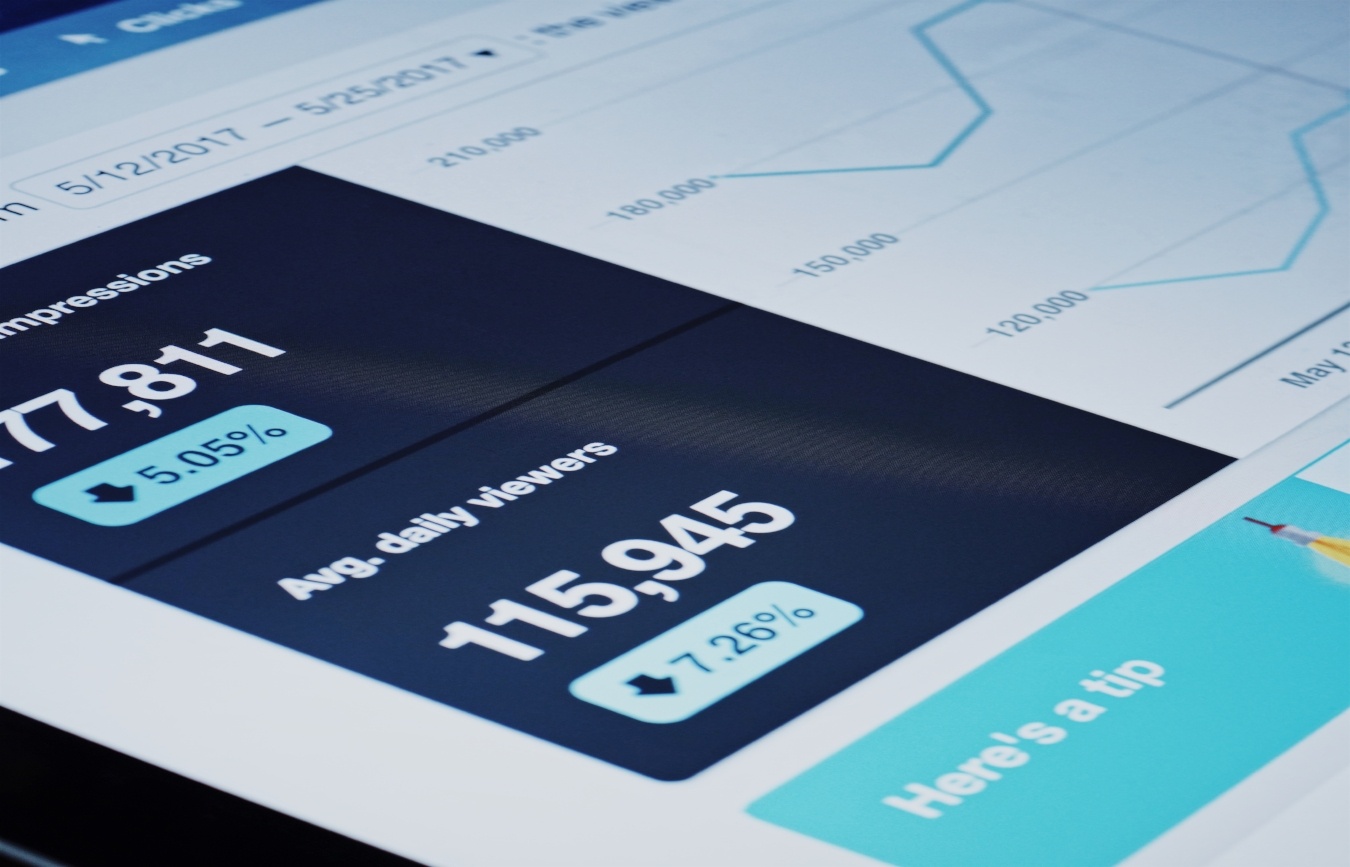
When it comes to measuring your B2B marketing ROI, the last thing you want to rely on is an excel spreadsheet.
Sure, you can manually collect your marketing data to analyze it for ROI, but that’s a lot of work and time that’s unnecessary.
Instead, we recommend using tools that have been built for the purpose of measuring your B2B marketing efforts.
With the appropriate marketing tools, you can effectively automate the marketing ROI measurement process, saving you time and money in the long run.
However, it’s important to note that there is no one-size-fits-all tool. You’ll need a different tool to measure each of your marketing efforts from email to website, social media, and more.
Below, we’ve outlined some of the best tools for collecting B2B marketing ROI data:
HubSpot
HubSpot is a great all-in-one marketing analytics tool that will provide you with a solid overview of your CRM, marketing, sales, and customer success. Think of it as a marketing tool that you can use to really dig down and gain a full, detailed picture of your leads.
This tool can help you figure out where your leads come from, how they react to your content, what they click, what they ignore, and why they convert. Basically, it lets you follow your lead from the moment they interact with your marketing efforts through the entire sales funnel.
The HubSpot platform offers many benefits including the ability to dial in and see what activities are working and what aren’t. You can determine how successful each marketing campaign is by its ROI and then easily make edits to improve the conversion pathway.
For example, in the screenshot below, you can immediately see how many new visitors your marketing efforts have driven to your website and how many leads were gained from those same efforts. You also have a quick glimpse of recent activity, which provides more intangible marketing ROI metrics including new inbound links and blog post comments.
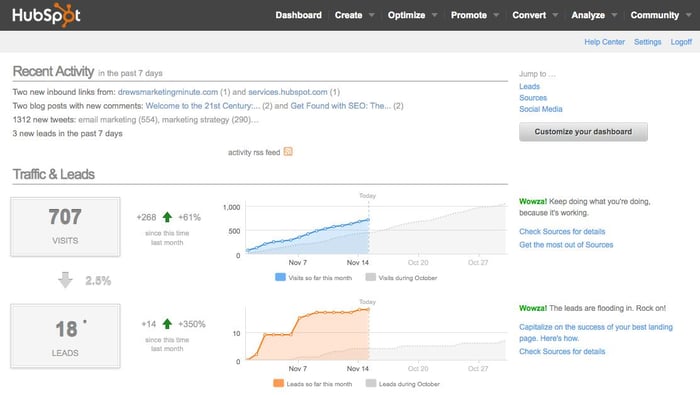
As for what this type of service will cost you, it depends on what you need and the size of your company. You can try out HubSpot for Free with a few standard features. However, as you add features or increase your needs, the price increases in tandem. Their packages include:
- Starter: $50/month
- Basic: $200/month
- Professional: $800/month
- Enterprise: $2,400/month
Salesforce
When it comes to tracking sales, customer service, marketing, communities, and more, no tool is more comprehensive than Salesforce. It’s an all in one CRM system that lets your company track every interaction with every customer. For B2B marketers, it’s an especially valuable tool for seeing every marketing interaction whether it’s a prospect or a current customer.
Salesforce can help your business track productivity and profitability with a variety of metrics including integration with Google Analytics 360 Suite. Best yet, Salesforce’s modular architecture lets you customize the platform for your needs, so you can measure the metrics that you want. For example, you can measure everything from employee productivity to resources spent on each client, money earned from each client, campaign results, etc.
For example, in the screenshot below, you can see that Salesforce distills down all of your marketing efforts into a single revenue number. There’s also data for the potential revenue from leads that are in the pipeline as well as the number of those leads. You can also drill down into individual campaigns to see the open rates of emails, how many form submissions you received on one of your landing pages, how event announcements were received, and more.
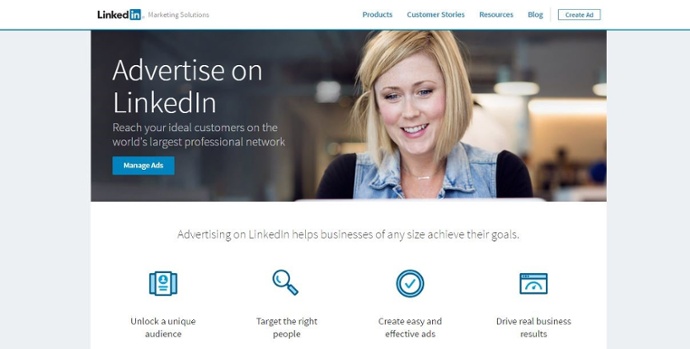
For B2B Marketing Automation and lead-generation, there are three price tiers:
- Standard: $1,000/month
- Pro: $2,000/month
- Ultimate: $3,000/month
Funnel
Funnel is a tool that provides you the complete picture of your advertising costs and results all in one place. You can quickly and easily see where you’re advertising—Facebook, Twitter, LinkedIn, MailChimp, Google, AdRoll, etc.—how those ads are performing in terms of conversions, and what the end results are.
This tool is best if your business advertises across multiple platforms and you’d like an all-in-one-solution that pulls the results of all of your ads into one, easy-to-access view.
Within Funnel, you’ll be able to quickly visualize and relate the success of your ads while also comparing campaign performances to ensure that you’re only spending money running successful ads.
In the screenshot below, you can see how the dashboard quickly outlines where the most ad money has been spent—on what channel—as well as the sales that have been attributed to each channel. This is a quick and easy way to determine your revenue versus the cost of your ads.
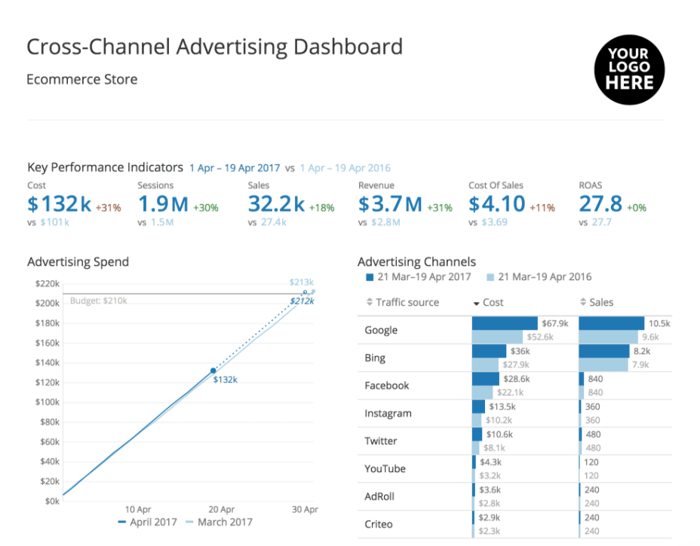
To get this platform, you’ll need to purchase a plan based on your monthly ad spend. The plans include:
- Standard ($50,000 monthly ad spend): $299/month
- Business ($100,000 monthly ad spend): $449/month
- Professional ($300,000 monthly ad spend): $699/month
- Enterprise (over $300,000 monthly ad spend): Contact for pricing
Google Analytics
Google Analytics is the definitive website tracking tool. When set up appropriately, you can assess all of your ROI statistics related to your website activity. You can even assign a value to every conversion from your marketing efforts to determine how much each conversion is worth and thus determine the overall ROI of your B2B marketing strategy.
To set up Google Analytics for conversion value, you’ll need to first determine a few key data points:
- Determine the “lifetime value” of your customers, which should include things such as recurring purchases and churn to see how much you can expect after an initial purchase.
- Next, determine how likely a lead is to become a customer. This is your conversion rate.
From those two data points, you can assign values to each conversion in Google Analytics so you can have compelling data to demonstrate your B2B marketing ROI.
For example, in the screenshot below, a newsletter campaign was set up with three goals:
- Visiting a landing page
- Adding a product to the cart
- Purchasing the product.
From there, Google Analytics was able to break down the percentage of visitors that completed each goal and how much each was worth.
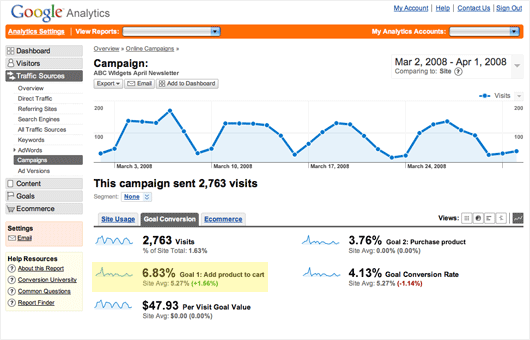
Google Analytics is free for most users or $150,000 a year for the enterprise version, Google Analytics 360.
Built-In Social Media Analytics on Facebook, Twitter, and LinkedIn
For social media, you’ll need a separate tool for each channel and the built-in-analytics tools on each platform work well. Each channel provides its own detailed analysis of everything that happens on your profile from the number of new followers to an analysis of each individual piece of content and its engagement (likes, shares, comments, etc.). You also have access to audience insights including where your followers are from and the languages they speak. You can also access data on your exposure, reach, and more.
Facebook Analytics:
In the screenshot below, you can see basic analytics such as the number of page likes, how far your posts reached over the last week, and the amount of engagement on all of your content during a specific time period.
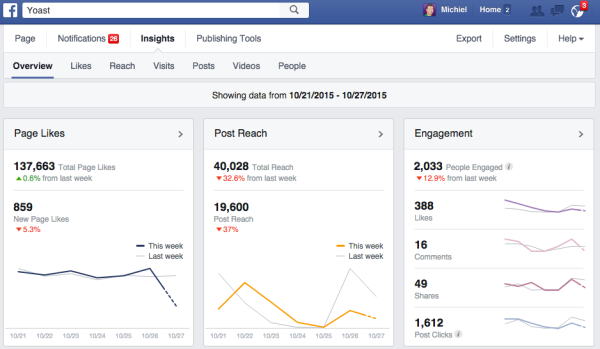
Twitter Analytics:
The screenshot below shows how Twitter provides information on overall impressions during a 28-day time period while also breaking down engagement (retweets, hearts, and comments), link clicks, and individual post success.
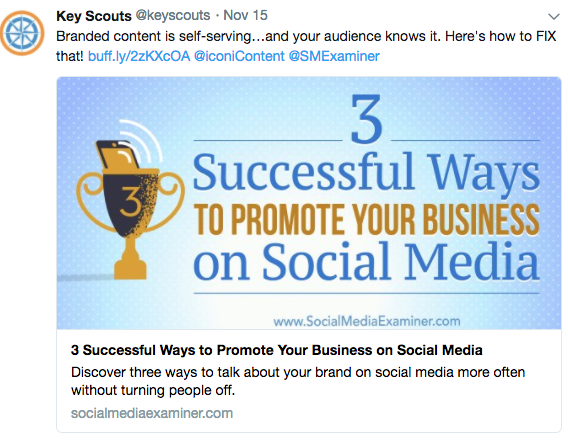
LinkedIn Analytics:
For LinkedIn, you can gain access to metrics on everything from the reach of your content to your followers, company page visitors, career page clicks, and visitor demographics.
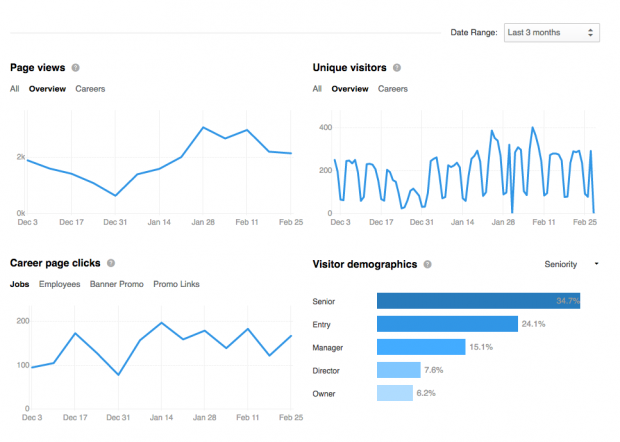
TrenDemon
Every B2B marketer knows how difficult it can be to measure the ROI of content marketing. This is where TrenDemon comes in.
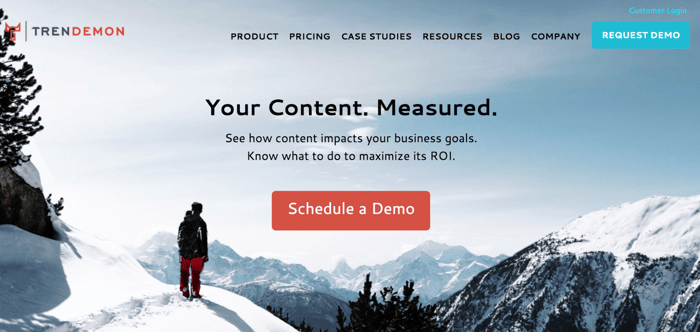
TrenDemon allows you to see the impact your content has on your business goals and how to use it to maximize ROI. It does this by creating detailed reports that attribute conversions made as a result of your content assets throughout each touchpoint of your leads’ journey on your website.
What’s more, TrenDemon automatically scans and analyzes each page on your website to present you with the top-performing blog posts, articles, videos, etc., based on the specific goals you configured. With this data in hand, you can make more informed decisions about what type of content to invest in going forward.
Spectoos
Another great tool for collecting B2B marketing ROI data is Spectoos. The customer testimonial platform not only offers a way to collect and display customer testimonials on your website, but also an intelligent dashboard that analyzes all the valuable information found in those testimonials.
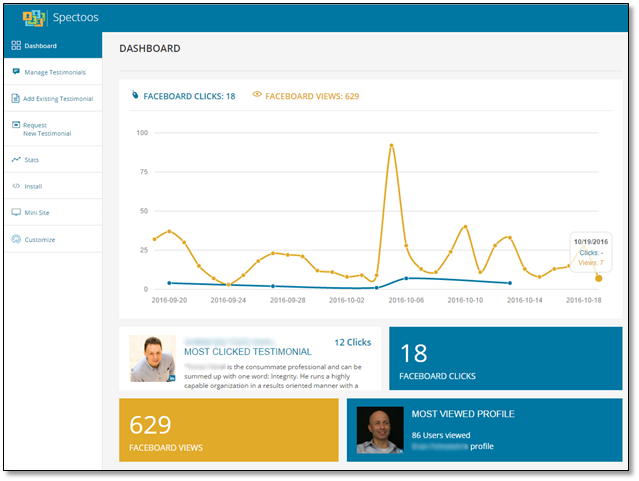
Customer testimonials are a highly important piece of the B2B marketing puzzle. They instill trust in prospective clients and in turn increase your conversions. With Spectoos, you can analyze the performance of your testimonials to see just how positively they are impacting your ROI.
To learn more about what tools you can use to demonstrate your B2B marketing ROI, contact KeyScouts today.
Alternatively, download our ebook to learn more about how you can measure the ROI of "unmeasurable" B2B marketing activities.
Ready to contact KeyScouts?







